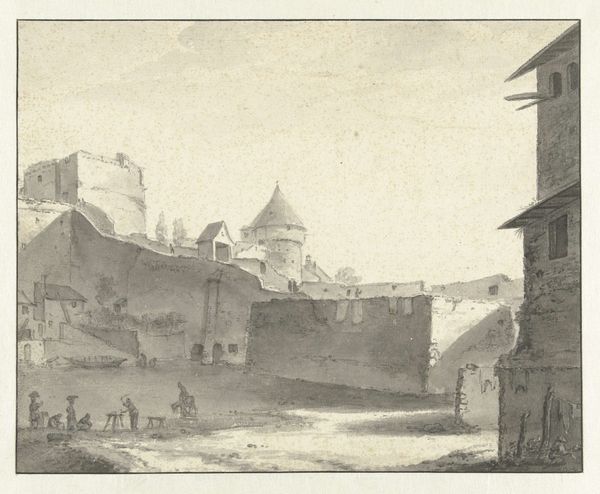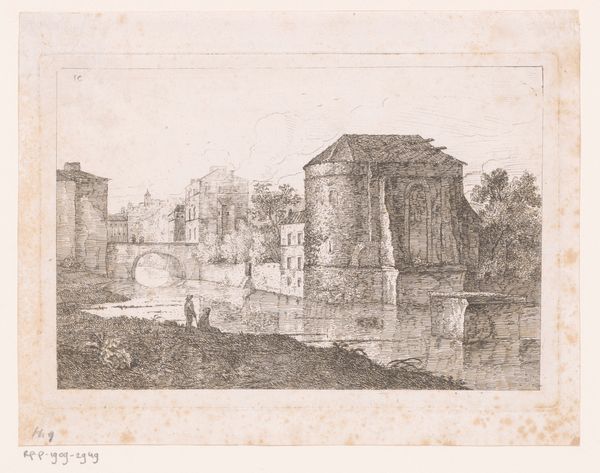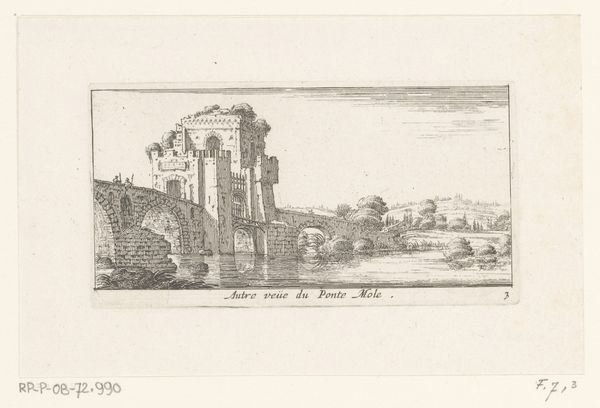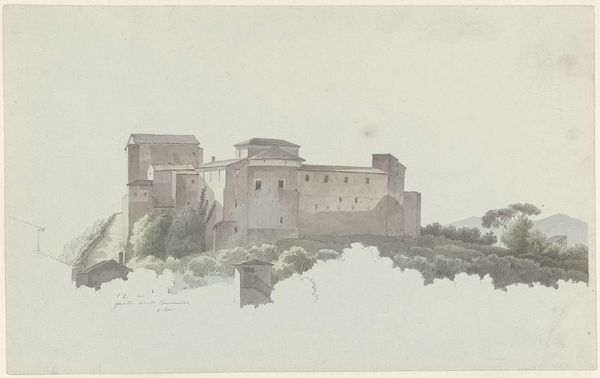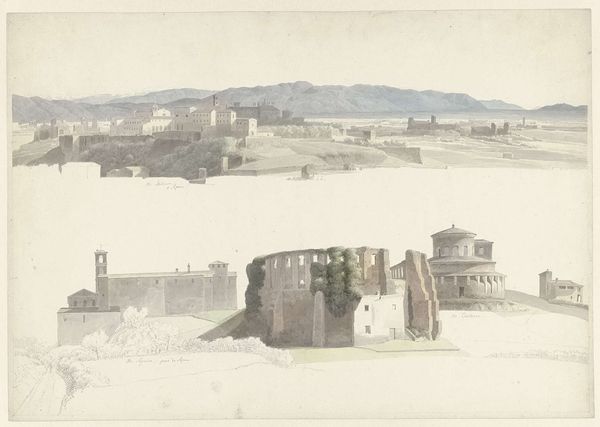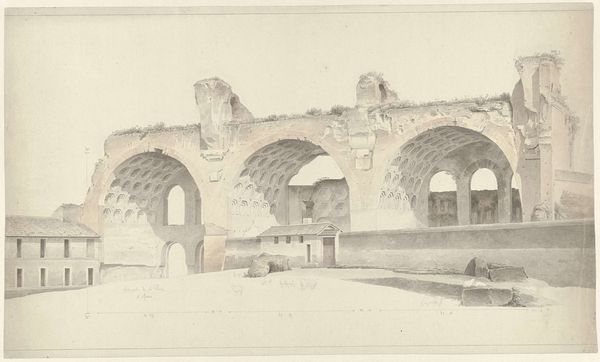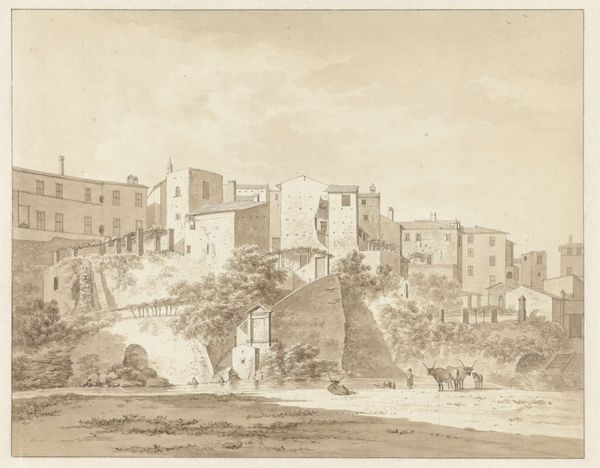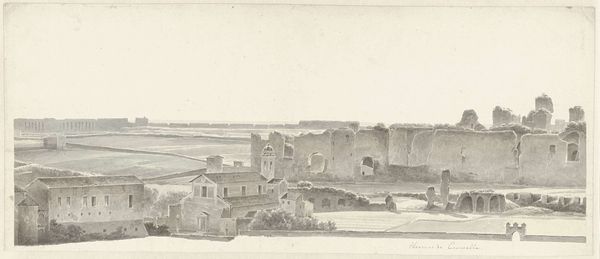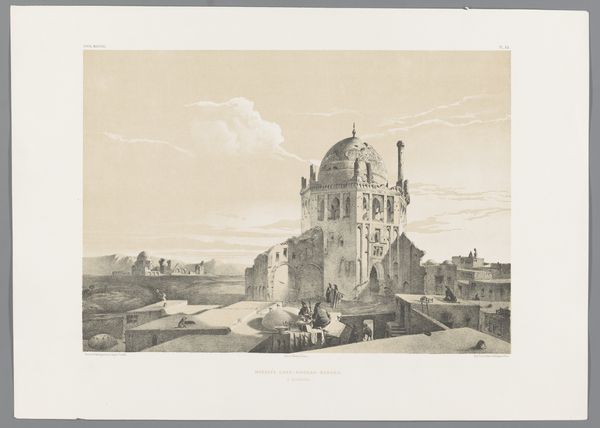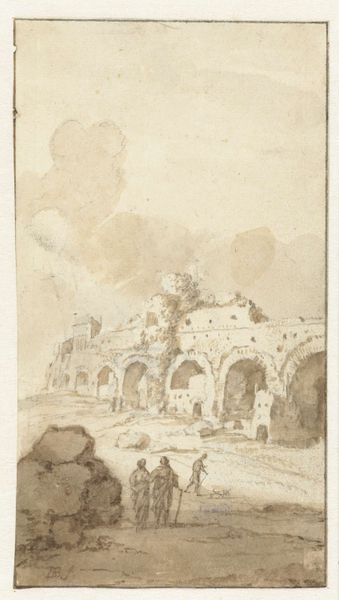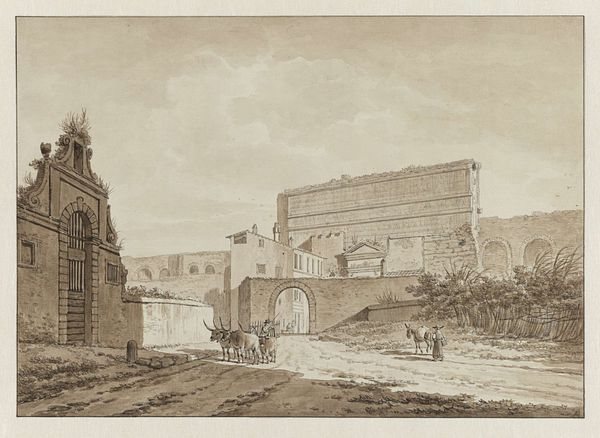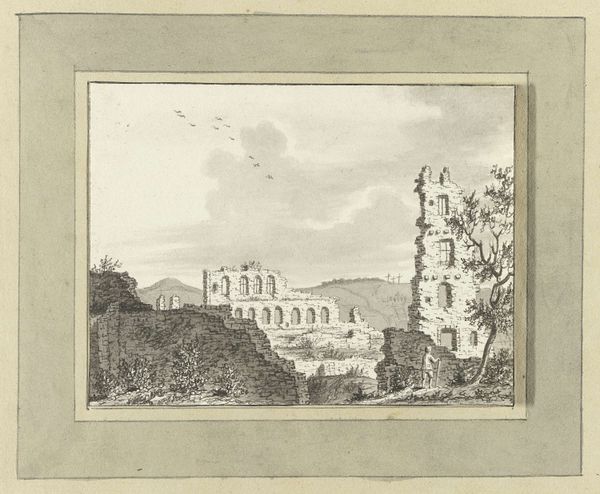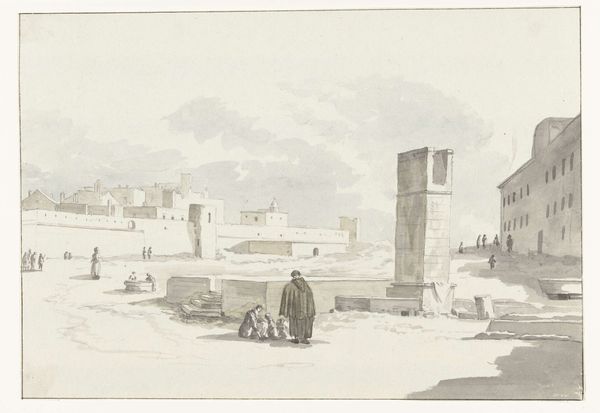
drawing, watercolor
#
drawing
#
neoclacissism
#
landscape
#
watercolor
#
cityscape
#
watercolour illustration
#
watercolor
Dimensions: height 272 mm, width 436 mm
Copyright: Rijks Museum: Open Domain
Editor: So this watercolor drawing from around 1809 to 1812 by Josephus Augustus Knip depicts The Basilica of Santa Maria Maggiore in Rome. It’s interesting to see how these large architectural forms seem softened by the delicate wash of watercolor. What do you see in this piece? Curator: I see layers of cultural memory embedded in this image. Look at the Basilica itself. Its imposing presence speaks to the enduring power of the church, but its depiction in this neoclassical style, and in this medium, creates a kind of emotional distancing. Do you notice the strategic use of line and form? Editor: Yes, I see what you mean. There’s definitely a tension between the monumentality of the subject and the softness of the execution. It doesn't have the weight I'd expect. Curator: Exactly! Knip isn’t simply rendering a building; he’s engaging with the layered meanings associated with Rome. He presents us not just with a building, but a statement. Think about the power of religious architecture. How did the city planners want us to perceive the Church's impact? Editor: So you’re saying the way he portrays the Basilica tells us something about how he and maybe even people at the time, understood its role in the culture and history of Rome? Curator: Precisely. And note the understated palette and meticulous detail. The watercolor almost seems to whisper, offering a space for contemplation. This suggests a specific emotional relationship, possibly one of reverence tinged with intellectual observation, quite characteristic of its time. The scene speaks of Rome’s religious and artistic legacy. Editor: It's like he’s trying to capture the essence of a historical and cultural icon, not just its physical appearance. I never would have considered that from just a quick glance! Curator: That's exactly the beauty of iconography: symbols speak volumes once we learn to listen.
Comments
rijksmuseum about 2 years ago
⋮
The two domes and the tall bell tower are part of the basilica of Santa Maria Maggiore, one of Rome’s largest churches. The ruins with the six tall, circular arches in the left foreground are very similar to the remains of the Aqua Julia, an aqueduct that conveyed drinking water to ancient Rome.
Join the conversation
Join millions of artists and users on Artera today and experience the ultimate creative platform.
